A few months ago, we looked at the Everything Fanless Home Server Firewall Router and NAS Appliance. Now, we have the 1U version of that machine. There is a lot of what we have seen previously, but the execution of the 1U version was better than we thought it would be. An 8-core CPU, 4x 10GbE, 2.5GbE, and more, all in a 1U form factor.
Qotom 1U Rackmount Overview
Of course, we have a video for this one going into a few more angles.
As always, we suggest watching this in its own browser, tab, or app for the best viewing experience. If this in many ways looks familiar, it is very fair to think about it as a 1U version of the system we reviewed earlier this year with a small fan and an internal power supply. You can learn more about that unit here:
We purchased the Intel Atom C3758R version of this unit for $292 on AliExpress. At the time this review is going live, there is a C3558 version for $278 barebones. We would highly suggest the $14 upgrade for twice the cores.
There are also options for a SSD and RAM to be provided so even with 32GB of RAM and a 512GB NVMe SSD, the cost is around $395. We also purchased a number of upgrades to go along with this unit such as additional cables, external storage, and so forth that we will discuss near the end of this review. Let us get to the hardware.
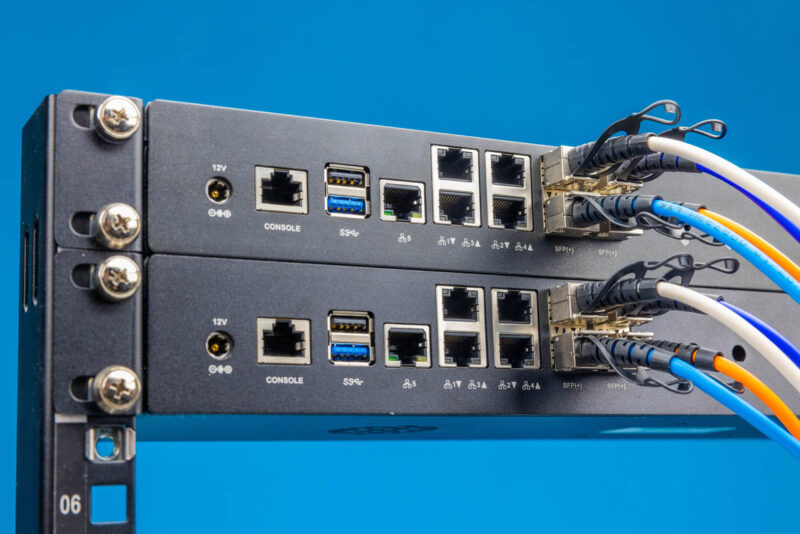
If you want to check current pricing here is the 1U AliExpress (Affiliate Link) and the Amazon (Affiliate Link) to the listings for this unit. Note that there are various configuration options to be sure to look at those before adding a unit to your cart.
Qotom 1U Rackmount External Hardware Overview
The system is a very short-depth 1U server. We took photos without rack ears just to save on horizontal space, but you can see this installed in a rack in the video linked above.
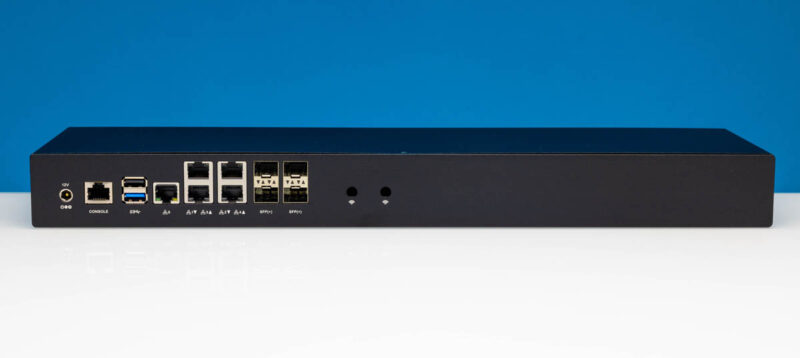
If the ports look somewhat familiar, here is the fanless version. The motherboard inside is essentially flipped upside down in the 1U version.
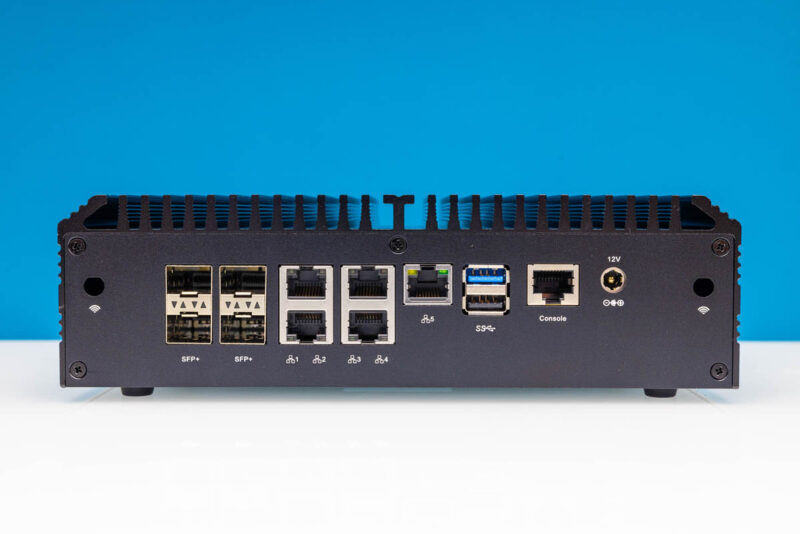
Talking about ports for a moment, we get the 12V DC input, a serial console port, and two USB Type-A ports. We then get five 2.5GbE ports that were Intel i226-V in our system. The standout feature is really the four SFP+ 10GbE ports based on the Intel X553 NICs built into the SoC.
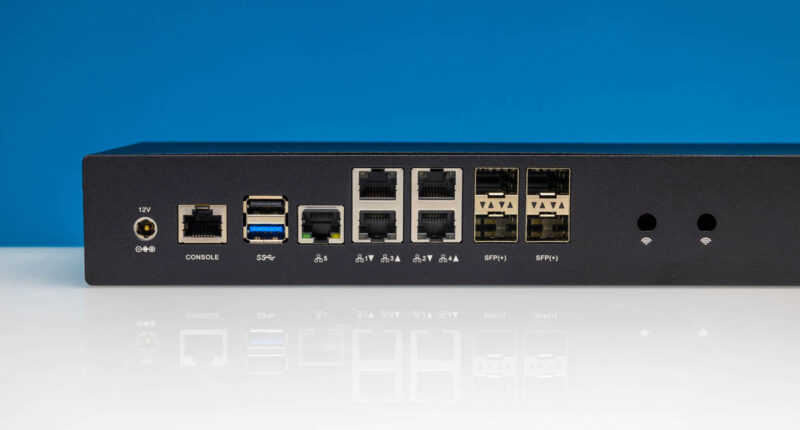
Something a bit strange about this is the labeling of the ports. Port 5 seems to be labeled correctly. The 2.5GbE ports and SFP+ ports are enumerated in opposite directions. It might be worth labeling these yourself.
There are two unpopulated holes in the chassis for WiFi or LTE/5G antennas. It would have been nice if these had covers on them.
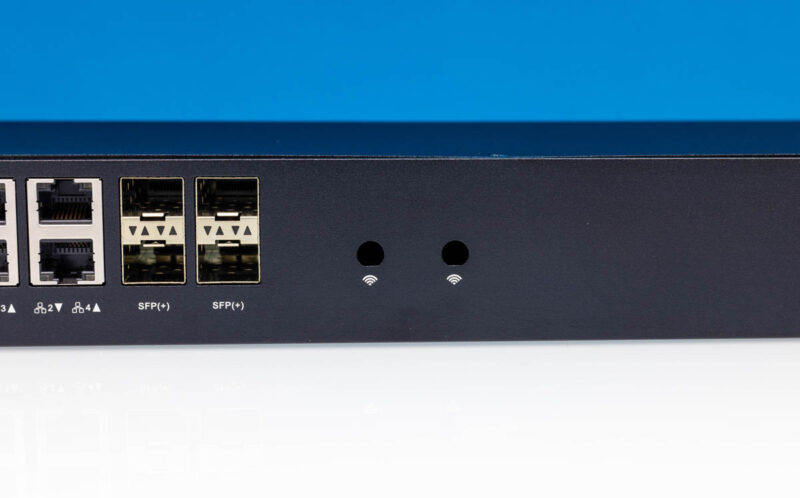
On the side we get holes on the front and rear for mounting. We are calling the network port side the front, but one could turn this around.
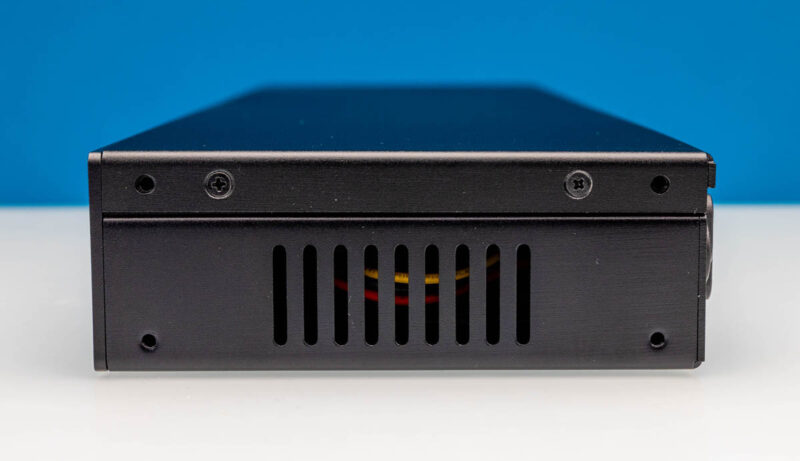
Both sides of the chassis feature vents.
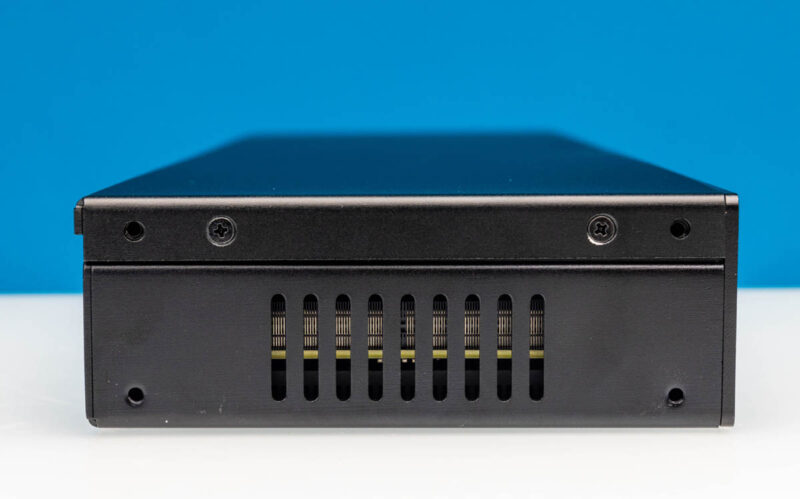
The rear has a few features that stand out.
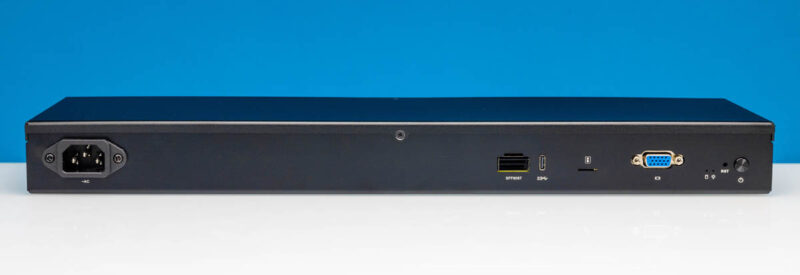
On the right side, we get a power button, status LEDs, and then a VGA port. This system has basic video output for management, but it is not something to play videos or games on.
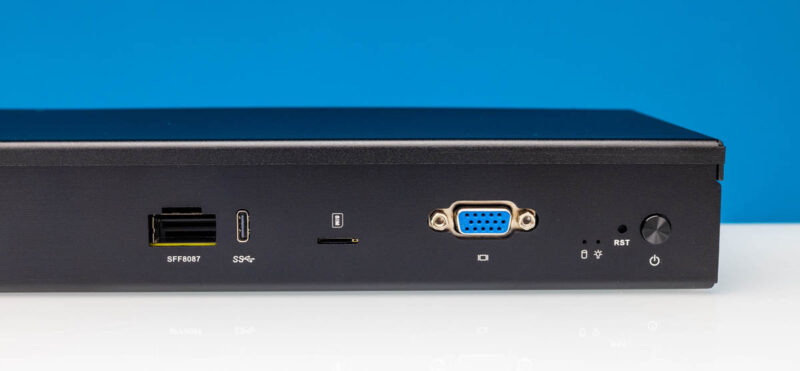
Next, there is a SIM card slot that we did not use, but it is for WWAN deployments. There is a USB Type-C slot that varies in speed from USB 2 to USB 3 based on the CPU SKU level you get.
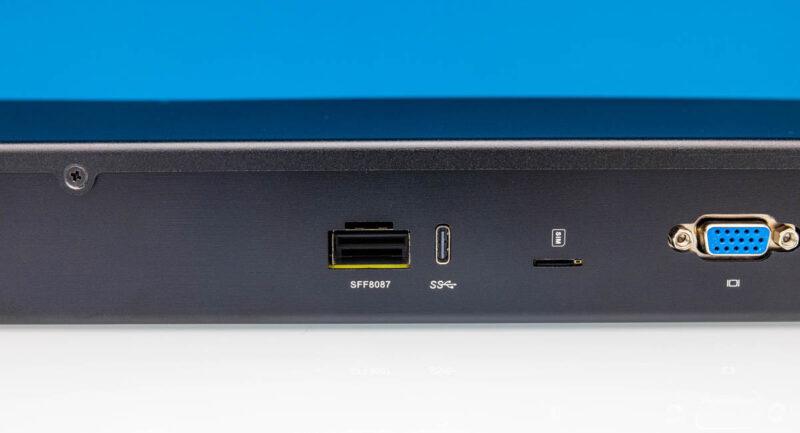
Then there is the SFF-8087 port. We commonly see SFF-8087 as internal SAS connections. Here, it is being used as an external SATA connection with four SATA lanes. There are inexpensive SFF-8087 to SFF-8088 cables, but if you purchase an external drive array, you will want it to be a SATA array, not a SAS expander array. We will go into this a bit more in our customization section later in this review.
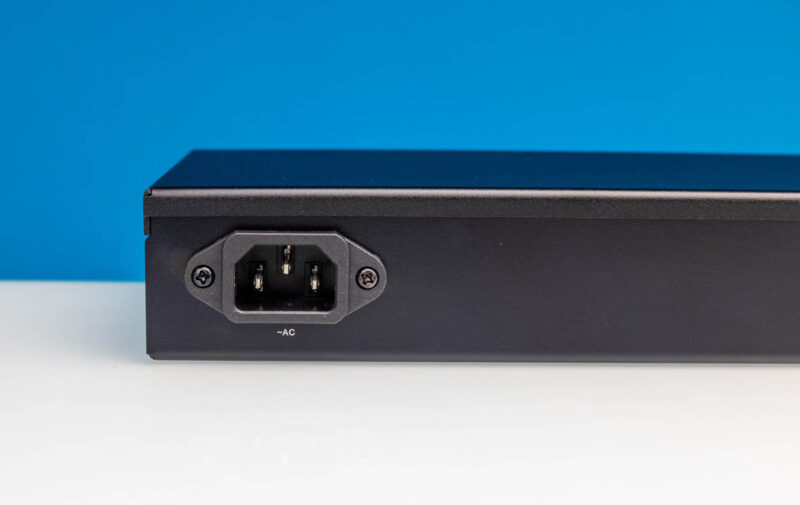
There is an AC plug, which is different for one of these low-power systems. We were a bit worried about what we might find in terms of a PSU after seeing low-cost 2.5GbE switches. We will show what we found in our internal overview next.
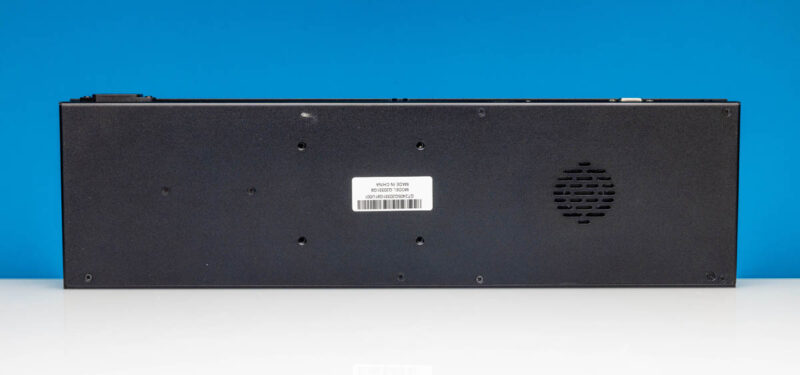
The bottom of the unit shows the small fan cutout for the CPU cooling.
Next, let us get inside the system.

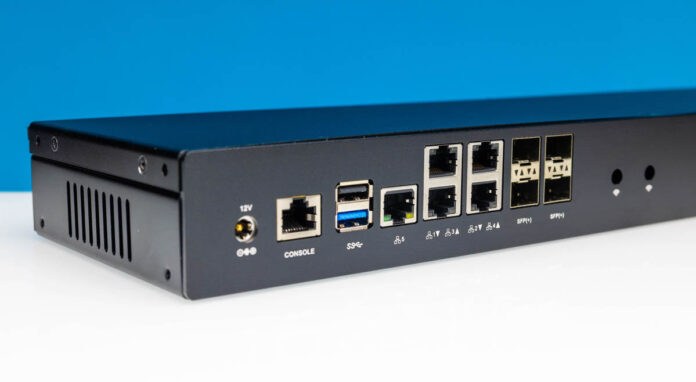



That’s an amazing configuration, and the ECC option was critical to include IMO. I have three Supermicro boxes configured as a 3-node cluster. Each include multiple SFP+ and Intel i350 ports and support ECC. I upgraded all of them with 128GB RAM, three NVMe’s, and a dual port 25GbE Mellanox card.
This is why I think the MINISFORUM MS-01 falls short of practical deployments in a homelab, because without ECC support, the true potential cannot be realized. The MS-01 is a great machine, but was a missed opportunity—hopefully the MS-02 includes ECC.
Everything in 1 box eh? A hacker’s dream come true!
Thanks for the great job STH team is doing
As you mentioned the NVMe area gets really hot that is why it is important to use low performance NVMe to manage heat. In my Mini PC I mounted 3x80mm FANs & replaced the bottom cover with a mesh just to keep that area relatively cold. I think this 1U setup it is great but it would be better if they made a mesh to mount tow fans instead of the WiFi antenna holes
Again thanks a million
My fanless non-rackmount model came with a Channel Well Technology (CWT) PSU, so even those seemingly no longer come with no-name PSUs, at least not all the time.
A rackmounted box, where the power switch is at the back of the box. That will work just fine.
What sfp to rj45 modules can be used with one of these??,,,
Thanks
My only problem with this is that the new E-cores are twice as fast as these. It’s a hard value prop when the N305 is more than twice as fast and uses less power. It feels like there will imminently be a new C-series line and that any C3000 series is already obsolete.
Granted, that’s somewhat hyperbolic, I do understand the differences between the N305 and the Cx000 atom lines (I have 3x C3758 systems in my lab today).
But I hope you see my point; the C3000 series is getting quite old to be part of greenfield deployments. Unless you need the crypto throughput or >2.5G networking, I’d add an N305-based system to my lab before any C3000-based systems.
How is the power supply connected to the motherboard? All the pictures show the wires disappearing under the board, but I do not see any connector in the picture of the underside.
page 3: “Mean Well LRS-50-12 a 12W 50V unit”
Should that be a “50W 12V unit”?
I have the fanless version, installed 32GB ECC RAM and also noticed the long boot time. I’m wondering if they ever disabled a lot of extra memory training/margining tests that developers usually use before release. It doesn’t hurt to have all that extra training enabled, but the value is debatable in a production system.
I would like to see also Wireguard perfomance tests.
To my knowledge it relies purely on CPU power so that would be a nice datapoint.
How does the 1U unit handle thermally vs the fanless “desktop” unit?
I wouldn’t buy any C3xxx based system at this point. Too slow vs Nxxx options.
Why would you have a fan on the bottom of a rack mount unit? It will be blocked by whatever is mounted below.
In the review the PSU specs are mixed. It’s 12V and 50W, not 12W and 50V